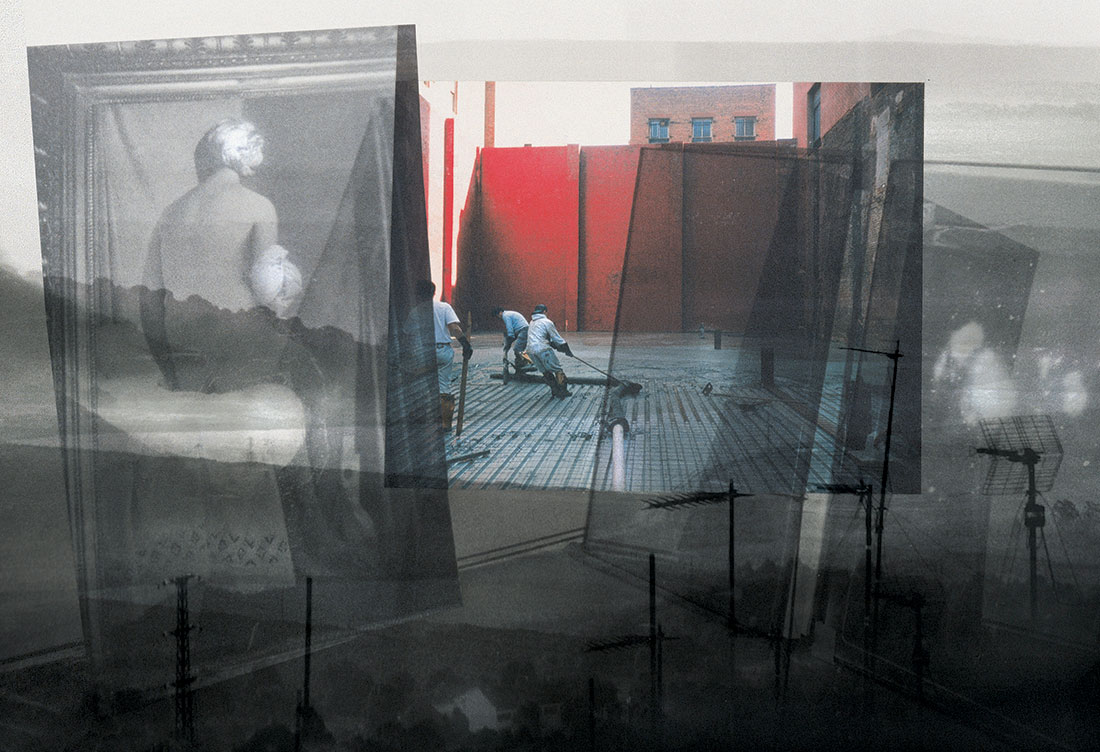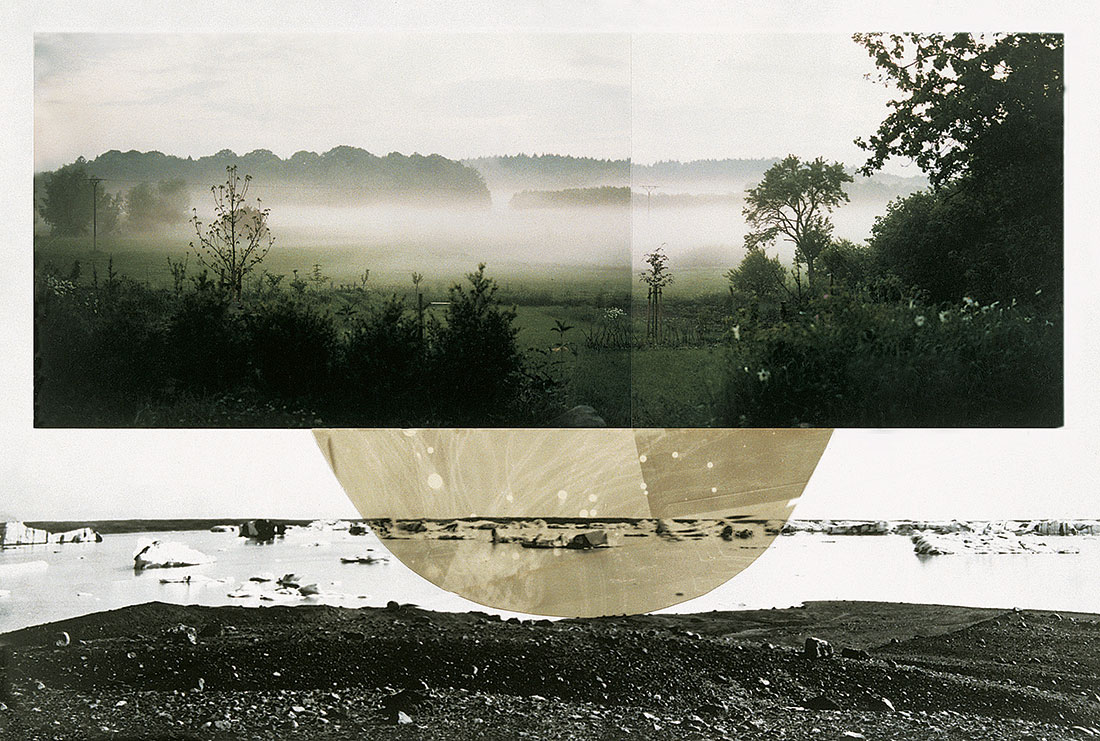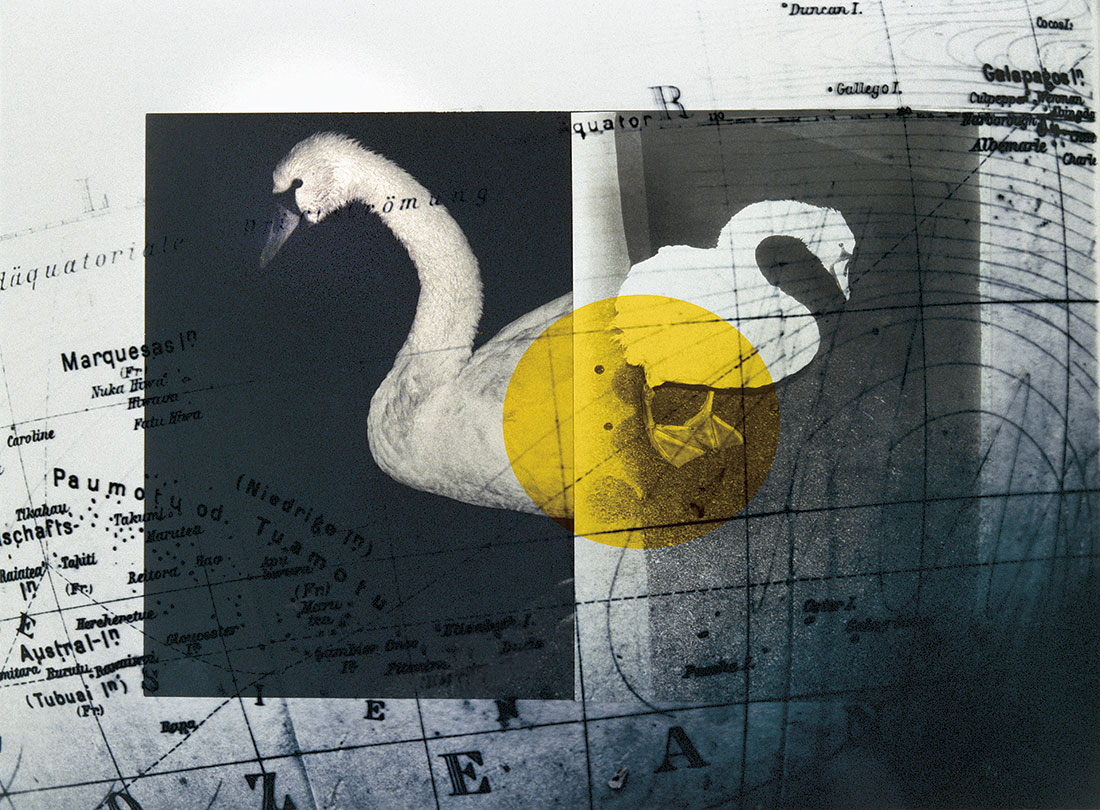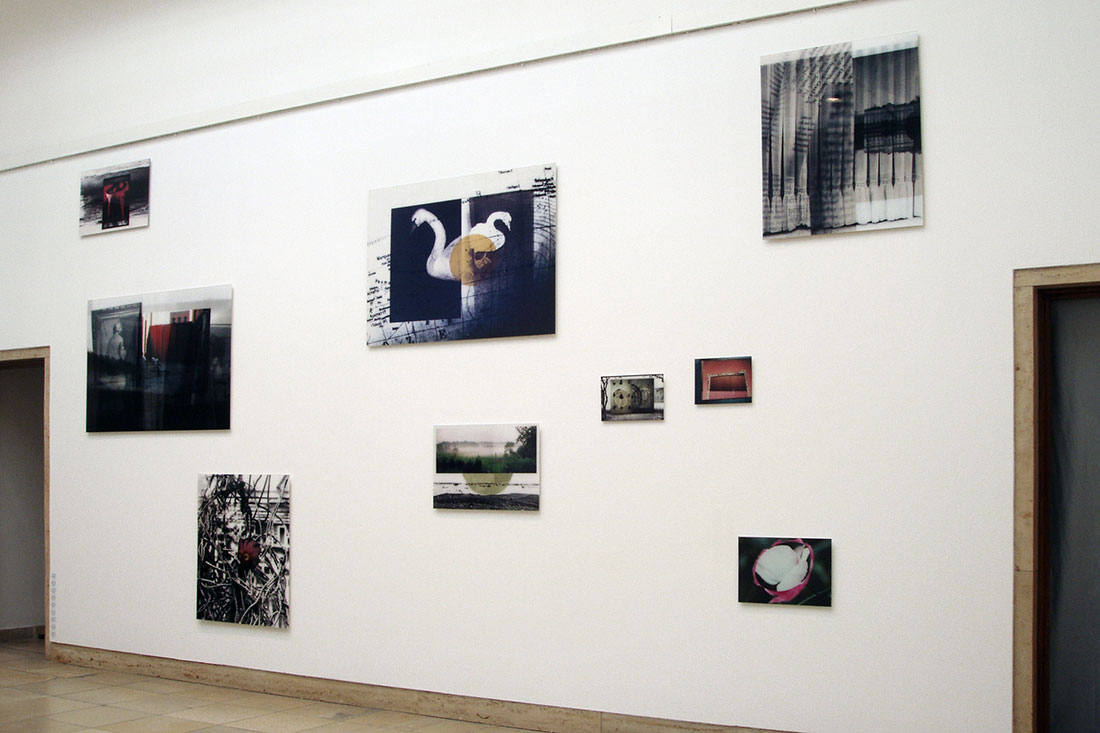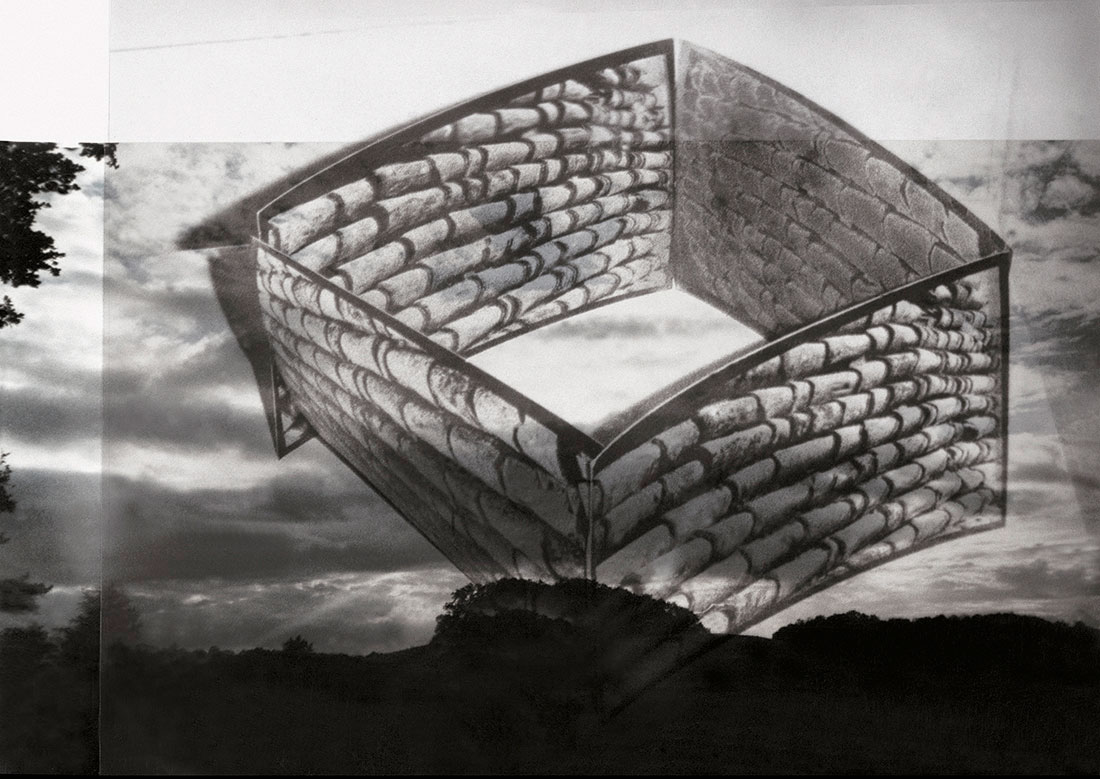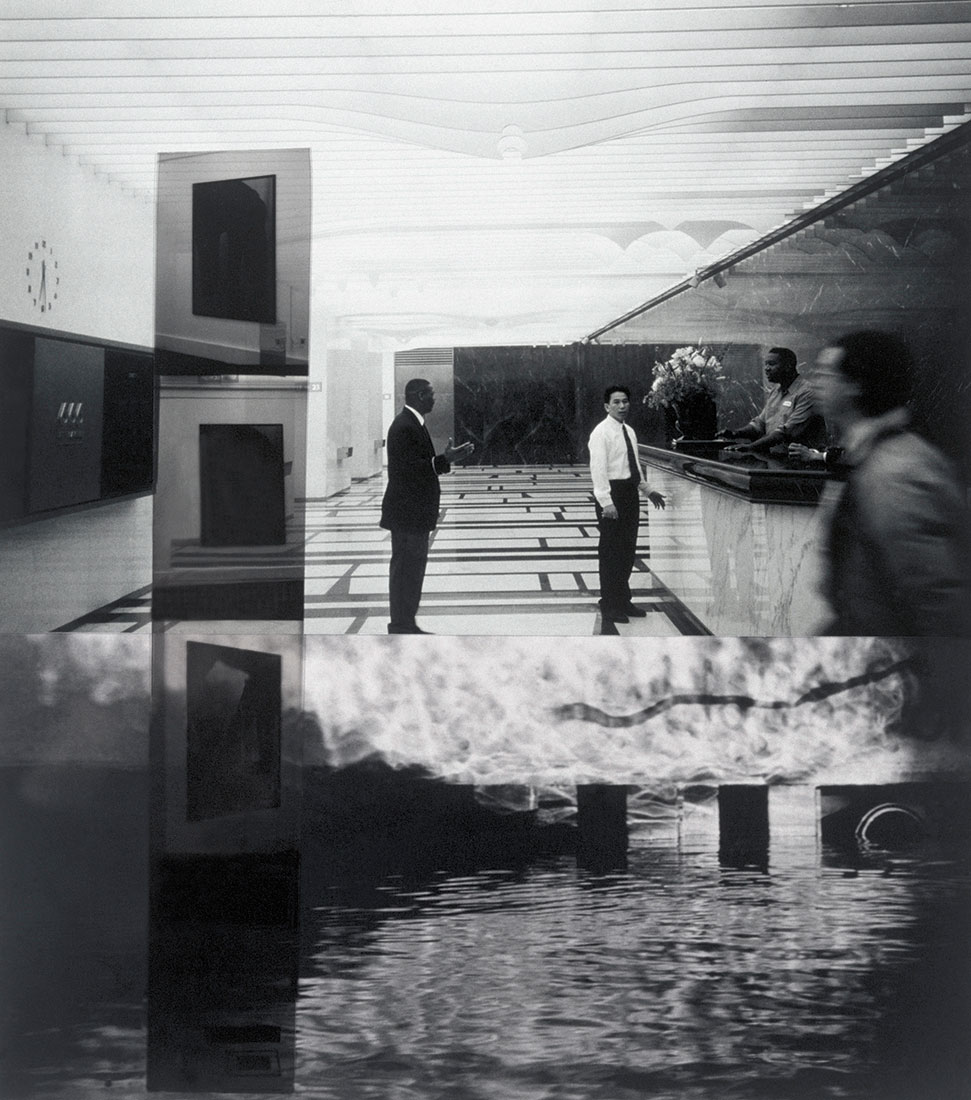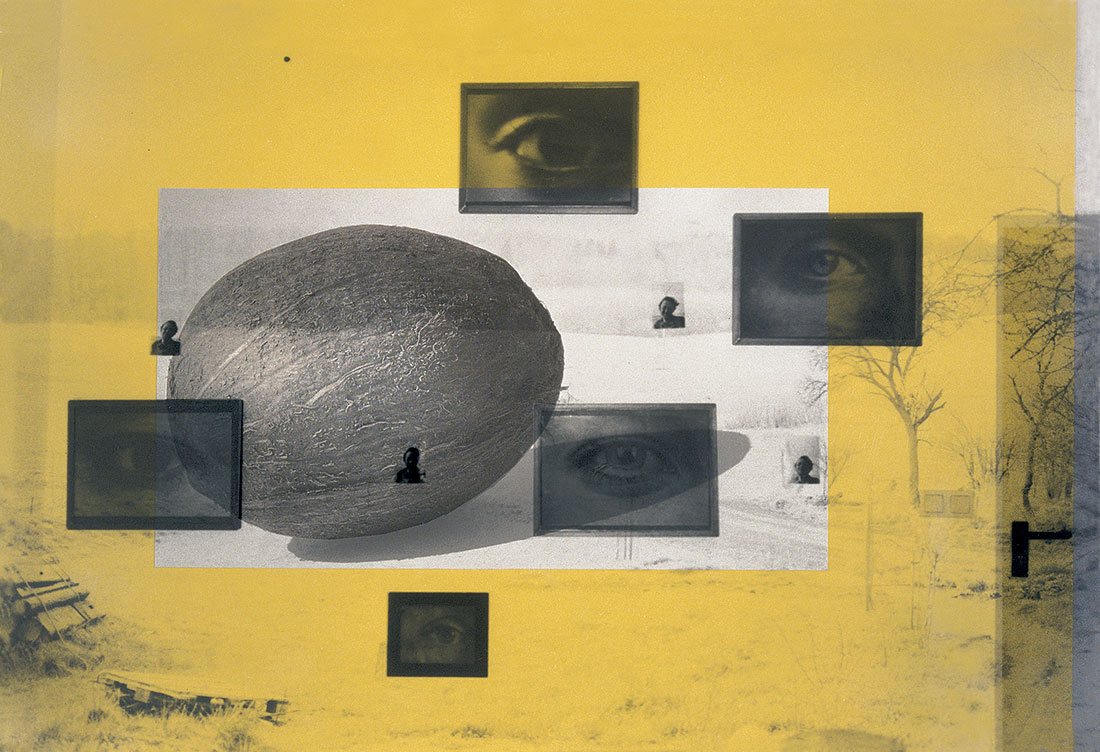Die fotografischen „Montagen“ entstanden über einen Zeitraum von fünf Jahren aus der Arbeit mit Collagen, aus C-Prints und transparentem Lithfilm. Sie wurden im Künstlerbuch ‚Montage’ zusammengefasst.
In der Montage kommt typischerweise die Gleichzeitigkeit des Ungleichzeitigen zum Tragen. Setzt man jedoch voraus, dass Sinneseindrücke keiner zeitlich stringenten Chronologie folgen, sondern Momente des Lebens hingegen von Überlagerungen verschiedener Reize geprägt sind, macht die Montage sowohl synchrone als auch diachrone Darstellungsstrukturen möglich, die das reale, sinnhafte Erleben der alltäglichen subjektiven Welt fassbar machen. Der so genannte Zufall oder die Irrationalität von Handlungen sind dabei genauso Teil dieser lebensweltlichen Syntax. Statt geordneter Zusammenhänge zeigen die „Montagen“ ineinandergreifende Perspektiven von Atelierarbeit, künstlerischen Interessen, erlebten Räumen und formalästhetischen Überlegungen.
The photographic “Montages” arose over a period of five years out of work with collages made up of C-prints and transparent Lithfilm. They were collated in the artist’s book ‘Montage’.
In montage, the simultaneity of the non-simultaneous typically comes to bear. However, if one presupposes that sensory impressions do not follow any temporally strict chronology, but that, on the contrary, moments of life are characterised by superimpositions of various stimuli, montage enables the building of representational structures – both synchronic and diachronic – that make the real, meaningful experiencing of the everyday subjective world graspable. The so-called arbitrariness or irrationality of actions are just as much part of this life-world syntax at the same time. Instead of ordered associations, the “Montages” show interlocking perspectives on studio work, artistic interests, spaces experienced and considerations of aesthetics of form.
